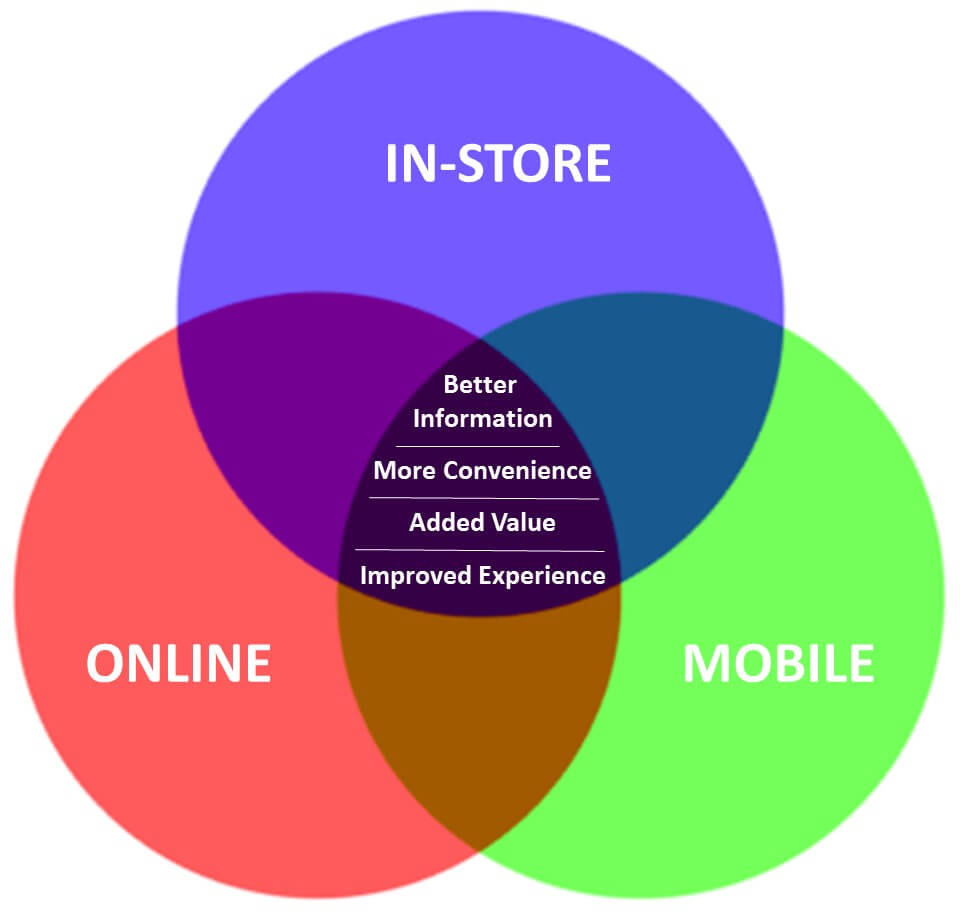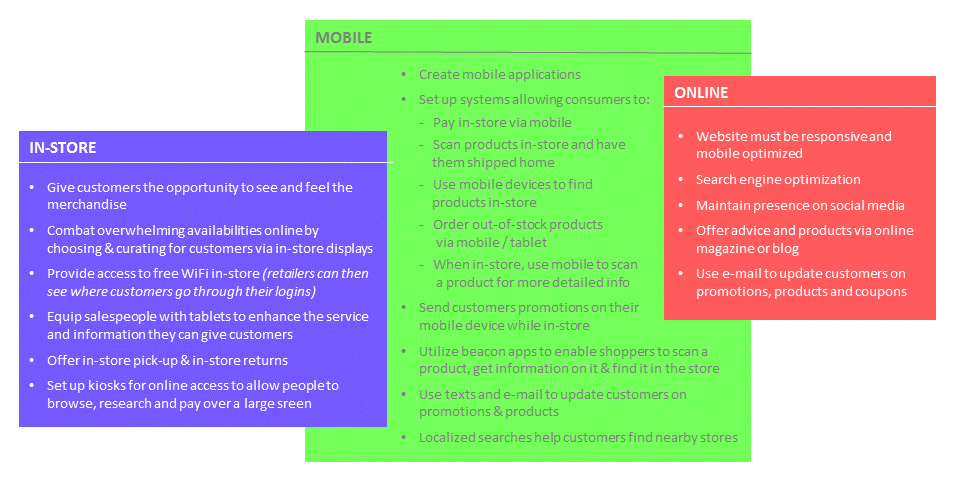The advent of online shopping brought customers numerous new advantages: price comparisons, reviews, convenient browsing, home delivery. But research has indicated that shoppers are beginning to have online fatigue (see our last post on Integrating Online and In-store Shopping). The ever-increasing availability of information and buying alternatives on the internet has offered consumers almost too many options. Delivery is appealing, but scheduling deliveries can be a problem, and returns by mail are time consuming.
Technology Has Caused Fundamental Changes in the Way People Shop.
While online fatigue has pushed some customers to increase their in-store shopping, the choice of where and how to shop is no longer either/or. Customers now often integrate online and in-store shopping, fundamentally changing the way people shop. This integration creates a new challenge for retailers.
As summarized in a report from The Economist Intelligence Unit, “People have changed the way they shop…Many will now research online and buy in-store, or vice versa. Moreover, especially with mobile technology becoming more popular, people expect to be able to shop whenever they want and wherever they are. Retailers have little choice but to react to behavior that has already changed.”
Smartphones and tablets are the catalysts of ‘seamless’.
Online and in-store shopping were once separate and distinct activities. However, the now ubiquitous smartphone has bridged the gap, allowing customers to have full online access while in-store. This transformation, along with customers’ desire for integrating the advantages of both traditional and online shopping, has prompted retailers to re-assess how to best attract and serve their customers.
As a result, many merchants are aiming to provide their customers with ‘seamless retail’: the ability to shop easily at any time and any place, whether via computer, smartphone or physical store.
How retailers are striving to offer a seamless shopping experience.
Ultimately, what consumers want is better information, more convenience, added value and an improved experience, by combining in-store, online and mobile access.
One of the key ingredients to seamless is integrating the elements of shopping between in-store, mobile and Web – also called ‘Omnichannel’:
- Maintaining consistent merchandising and pricing across channels
- Real-time inventory management and search features, allowing consumers to check product availability online and in-store
- Building systems that give consumers flexible fulfillment options – e.g. store pick-up after purchasing online or home delivery after in-store purchase
- Incorporating technology and design that is consistent across devices, so moving from computer to phone to store does look and feel entirely different to customers
The infographic below shows ways retailers are using omnichannel methods to enhance the customer experience. By definition, many of these methods are overlapping.
Retailers already track customer purchases through loyalty programs. Integration presents retailers with an additional opportunity to follow a customer’s online, mobile and in-store purchases, to suggest products and services and to provide personalized discounts (like birthday specials).
Omnichannel changes the function of the physical store.
Technology has changed the way people shop. However, the overwhelming majority of retail sales still occur in physical stores, where retailers can give customers a tangible, sensory experience, convenience, and personal service and interaction.
In addition to branding, the role of the physical store is changing to focus on the unique benefits of in-store shopping, while providing as many of the advantages of online and mobile shopping as possible. This means first and foremost providing free wifi in stores, and being an antidote to the drawbacks and limitations of online shopping. For instance, by offering in-store pickup and returns, and by combatting the overwhelming number of choices online by carefully choosing, curating and presenting products in-store.
Seamless retail remains in the early stages.
While much discussed and fascinating in concept, the challenges of seamless retail are daunting, both from a planning and implementation perspective, and in terms of required investment. As a result, The Economist Intelligence Unit reports that “progress [in omnichannel] remains modest….Many retailers have yet to carry out basic steps, such as adapting their websites to mobile apps. Few have hired a person to take overall charge of the customer journey or have unified their customer service across platforms.”
This is supported by Accenture’s Maximizing Mobile to Increase Revenue, which estimates that “only 8 percent of tablet users and 7 percent of smartphone users are able to start shopping with their mobile device and complete the cycle in store.”
Because of its complicated nature, few companies can manage omnichannel alone. Outsourcing and collaboration can be strategic ways for retailers to work with other companies that can help them provide a more seamless experience – for example, in product delivery, inventory management, or technology.



